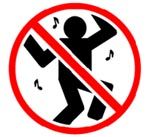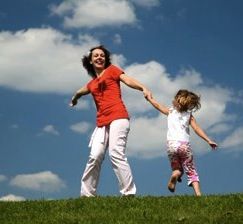Embarrassment
Are You Afraid to Dance?
Reducing the stigma and vulnerability of dance expression
Posted August 10, 2013

Have you ever said or overheard someone say, “Oh no! I don’t dance” or do you watch people at a party tear up the dance floor while others don't even dare to tap their toes to the beat of the music? Is there something about dancing in particular that induce fears of vulnerability, embarrassment, humiliation, or shame? For some, the assumption exists that dancing of any form requires “skill” and there is both a “right way” and a “wrong way” to move. For others, the fear of even dancing or being in the presence of others who are dancing creates anxiety. In fact, one may be surprised to hear that there are people that actually suffer from a phobia, chorophobia, the “fear of dancing” where symptoms of panic attacks and complete avoidance of social situations where dancing is involved are common. Hollywood actor, Johnny Depp, announced last year on an appearance on The Ellen DeGeneres Show that he "fears [dancing] more than anything in the world" and that he'd rather "swallow a bag of hair" than dance.
Even more surprising, I recently read a blog post describing an experience of a mother whose son, while openly expressing his love to dance and desire to be a dancer when he grew up, was ridiculed and shamed by a stranger for such a dream. Perhaps the reaction by this stranger was a reflection of a deep vulnerability that this person had about his or her own body expression and for some reason, dancing for the joy of it and as an expressive outlet was “wrong” and threatening.
Personally, I remember an occasion during my graduate training where I overheard a family friend talking to my father about my chosen profession. “She’s going to be to be a what? A dance/movement therapist? Well, at least she’s got her husband.” The reaction from this family friend angered me, as it felt as if there was criticism that the use of dance in a therapeutic context couldn’t quite possibly be a reputable or meaningful profession. A similar feeling, I’m certain, that this mother may have had in response to her son’s public expression of his passion to dance. So what is it about dance specifically that induces such vulnerability for some?
We can learn some lessons from the YouTube viral sensation, Where the Hell is Matt? who dances all over the world with people from various cultures. His infectious carefree dancing in front of a camera has drawn in both a corporate sponsorship and billions of inspired viewers (myself included). What marvels me the most about his project is not his “skill” in dancing, but in his comfort in dance as form of expression that transcends cultural barriers and inspires people across the globe to move with him.
Matt describes his process at the start of the project first by moving in front of famous landmarks solo, but quickly discovered that dancing with others, rather than alone, was “more interesting.” Yes, Matt, not only is it “more interesting” but moving in relationship with others is actually a biological imperative. Our brains have an innate desire to synchronize and harmonize with each other. This kind of natural desire is known in the scientific literature as “entrainment.” Entrainment occurs when resonant fields rhythmically synchronize together, such as brain waves, circadian rhythms, lunar and solar cycles, breathing, circulation, and rhythms found in the nervous system. It is also a way the body experiences the sensation of feeling understood, seen, and not alone.
At the conclusion of Matt’s 2012 video after we watch him dancing all over the world, Matt concludes by dancing with a baby on his shoulder (maybe his own, I'm not sure). To me, this image highlights the powerful role that dance can have in bonding and connecting communities — small and large. In all of his videos it is clear that joy, not humiliation, is seen on everyone’s faces.

So why be afraid of dancing? In fact, there is so much to gain by dancing, as discussed in one of my previous blogs "Why should we dance?" Dance reduces anxiety, stimulates memories, activates the brain’s pleasure circuits, regulates mood, improves body image, and channels underlying feelings (just to name a few). Many people even not aware that there is a profession of dance/movement therapy call dance in itself their “therapy.”
To learn more about dance/movement therapy visit www.adta.org
© Christina Devereaux, PhD, LCAT, LMHC, BC-DMT


